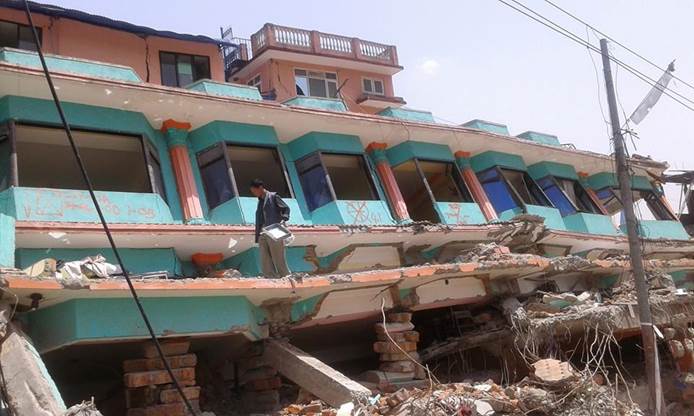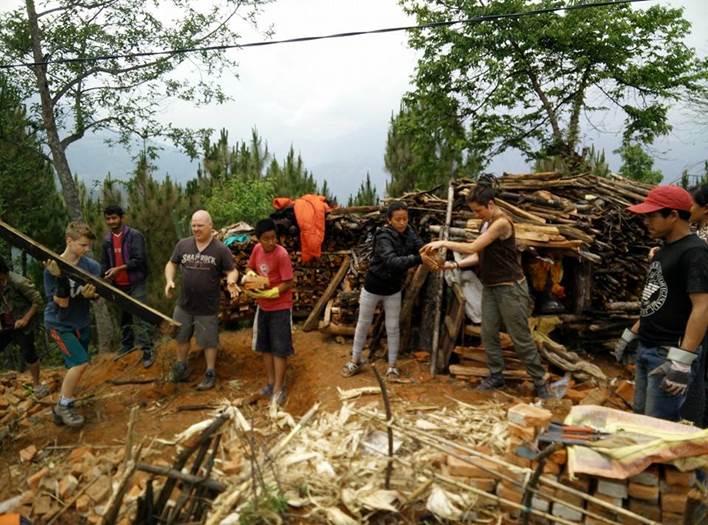One of our long time clients, Paul Hiebert, from Mainland Machinery was in Nepal when the earthquake hit.
Read his first hand account here and how we all can help.

Q: Why were you in Nepal?
A: I decided to take my 13 yr old son on a father and son adventure. We had explored the idea of Brazil, Thailand and Nepal as we had relational connections with all 3 locations. We settled on Nepal.
The other purpose of this trip was to explore the possibility of starting a school in a town near Gorhka. The nearest school is only 19 km but it's far enough away that kids stay at a boarding school. We hoped to provide a good education and keep families together at the same time.
Q: Where were you when the quake hit?
A: We were in a church and in the process of being introduced. One of our crew actually about to preach. Only two days prior we were in the town of Gorhka, the epicenter of the earthquake. We were likely the last westerners to be there.
Q: How did it feel?
A: It caught me in mid step and threw me to the ground. It was very disorienting at first. Once we realized what was happening we looked for cover as the path out of the building was quite congested.

Q: Once the immediate danger was over for you, what did you do?
A: We all assembled in the courtyard of the church and waited. We tried to call home. Lines were busy and it took a little while to get through. We tried to stay in touch with our western contacts to get more information about what was happening and how big the earthquake was. We were also subjected to numerous aftershocks that kept everyone on edge.
Q: How have you been able to help?
A: There were 3 of us westerners traveling. We all had access to funds through an ATM and each day we took out several hundred dollars each so the church could purchase supplies. We bought hundreds of bags of rice, tarps, oil, salt, sugar knowing that this would be the most pressing need. The day after the quake we thought and we strategized how to be most effective. Through our relationships among the churches, we had access to numerous villages and personally knew of 100 homes that were lost.
The next day we visited two villages near Katmandu to assess damage and guide our planning. The next three days we alternated relief efforts between the two villages, Kothgaon and Chhampi.
The focus of the work was to salvage building materials, personal belongings and food.
With monsoon season coming, it’s imperative that temporary shelters are made and this can be done with the existing materials.
Most houses have bamboo or wood, tin roofs, and brick. Wood and tin make up the shelter while the brick provides solid ground cover.
In one day, we were able to recover the necessary materials and use them to make a shelter. Our friends were very happy!

Q: Can you give us a sense of how the people are dealing with this disaster?
A: They've been stunned and haven't really known how to proceed. However, once we started work on one house in the village of Kothgaon and showed progress, neighbours started to do work on their own homes. One villager thanked me and told me how inspired he was by our efforts.
Most people in the city sought shelter for several days in open areas like parks or fields under tents where possible.
Q: What did you see as the greatest needs?
A: Keep people fed and build temporary shelter before monsoons hit. After that we begin the long term plan of rebuilding using techniques that are earthquake ready.
Q: How can people help?
A: Donations can be made through the Winnipeg Centre Vineyard at winnipegcentrevineyard.com or http://winnipegcentrevineyard.com/nepal-earthquake-one-week-later/
Details of the ongoing relief efforts are published and we are working with a great team of local people on the ground in Nepal